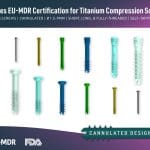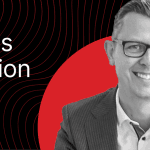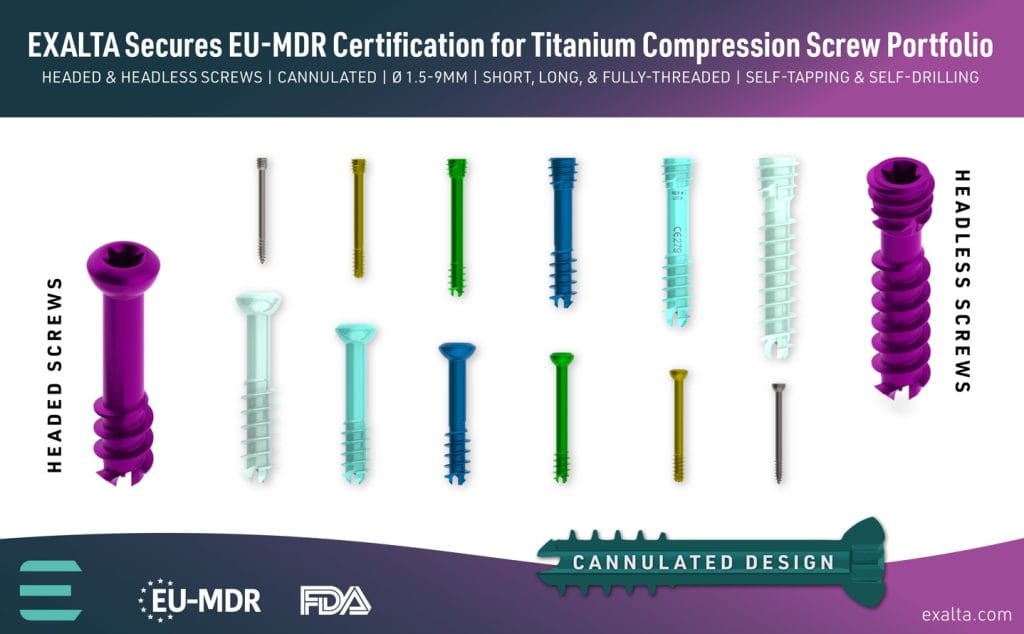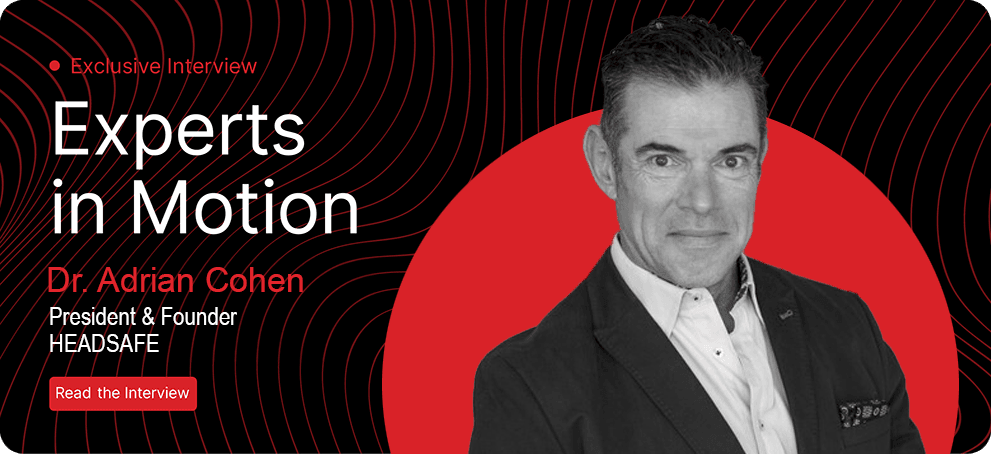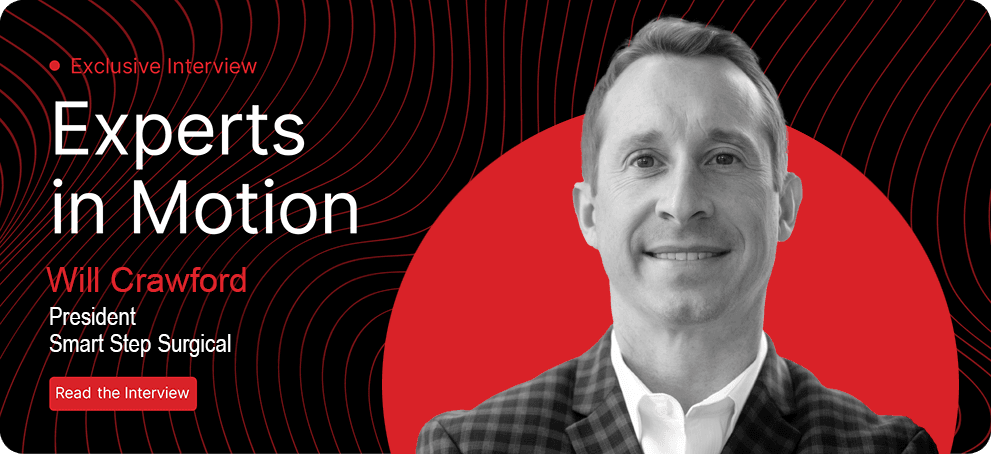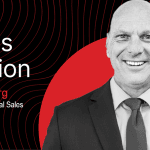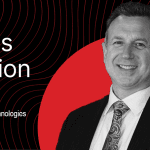Brian More, CEO of Nanovis, on Nanotechnology, Focused Execution, and Strategic Growth
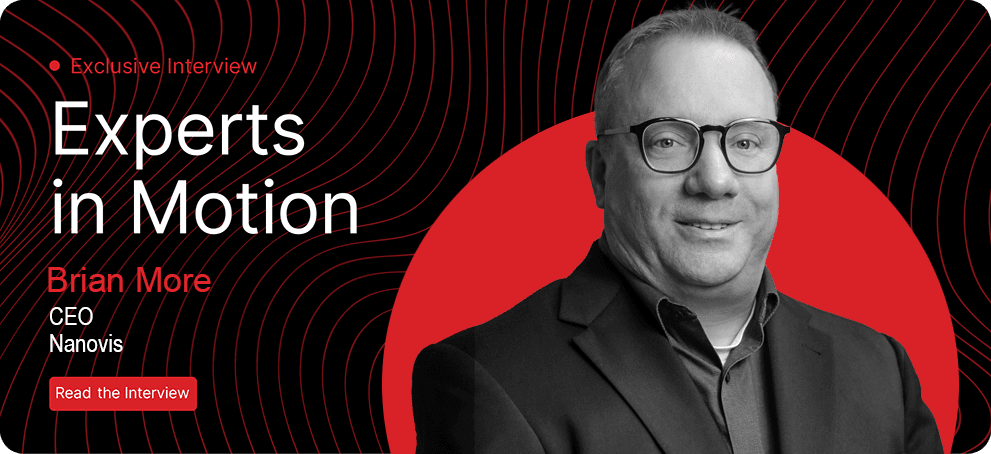

Interviewed by Guillaume Viallaneix, President at MedTech Momentum and Editor-in-Chief of The MedTech Digest & Tim Sheehan, Managing Director at BlackPoint Capital Markets
Editor’s Note: In this edition of Experts in Motion, we sit down with Brian More, CEO of Nanovis, for a candid conversation on strategy, science, and scaling up smart. From startup grit to a groundbreaking collaboration with Medtronic, Brian shares how Nanovis is transforming orthopedic and spinal implants through surface-level innovation, and why staying focused is the key to long-term success. This interview offers practical takeaways for MedTech leaders dealing with constrained capital, regulatory complexity, and the need for faster innovation in the OR.
Guillaume Viallaneix: Brian, thanks for joining us today. Before we dive into Nanovis and your work with Medtronic, could you start by telling us a bit about your background and what led you to the MedTech space?
Brian More: I’ve been in medical device development and manufacturing for more than two decades, with a background that spans finance, corporate governance, operations, and product strategy. Throughout my career, God has blessed me beyond measure. Before stepping into my role at Nanovis, where I’ve been involved since the formation—I served as President of Catalyst Ventures, Managing Director at Restoration Medical Polymers, and Chief Financial Officer at Micropulse. Each of those roles gave me a deeper understanding of the mechanics behind innovation, commercialization, and supply chain management in MedTech. Whether it was funding and navigating early-stage technologies, building manufacturing scalability, or supply chain management. I’ve always gravitated toward the place where ideas meet execution. What I love about leading Nanovis is the ability to take meaningful technologies from concept to commercial reality without the bureaucracy. It’s fast, focused, and impact-driven.
Tim Sheehan: What kind of problems are you trying to solve for surgeons, hospitals, or even other MedTech firms?
Brian: At the core, it’s about clinical performance—how do we help patients achieve better outcomes with less complexity? For example, with spinal fusion, the surface of the implant is critical. If you can optimize osseointegration and reduce infection risk, you can improve implant integration and shorten recovery times. That’s exactly what our technology does. For OEMs, we’re solving a different problem: how to incorporate advanced surface technologies into their implants without building internal nano surface manufacturing capabilities. We offer that capability as a CMO focused solely on surface technologies, which is a big deal in this environment where speed to market and regulatory readiness are key.
Guillaume: Let’s talk about the Medtronic deal. That was a big win.
Brian: It really was. Medtronic acquired certain nano-surface technology assets we developed for PEEK interbody devices. They saw the clinical value and scalability. That deal didn’t happen overnight—it took years of alignment, testing, and validation. For a company like Medtronic to put our tech into their spine portfolio says a lot. For us, it was a validation of both the technology and our execution discipline.
Tim: A lot of MedTech startups struggle to get attention from strategics. What made the difference for Nanovis?
Brian: Focus, execution, and proof. We weren’t out-pitching every month. We were head-down, building. When the time came, we had a clear value proposition, sound data, and a repeatable and scalable manufacturing process. We also understood how to speak their language, regulatory, operational, clinical. That’s key. If you’re trying to partner with a large OEM, you have to reduce the friction to integrate. We did that.
Guillaume: You’ve also pivoted Nanovis into more of a platform, and CMO focused on implant surface technology. What does that mean in practice?
Brian: We are a CMO with added capabilities to fully commercialize products. We could easily be a CDMO, but we feel the design component could become a distraction. We are well-positioned to help OEMs bring differentiated products to market faster—with less risk and more impact. We’ve spent years refining our technology, but equally important, we’ve made it easy to adopt. That’s critical. A lot of innovative companies offer impressive tech, but they create too much friction—complex licensing terms, unclear regulatory paths, or burdensome integration. We strip all that away.
Tim: Can you give a concrete example of how you reduce that friction for OEMs?
Brian: Sure. Take an OEM that wants to add our nano-surface to an existing product. They don’t need to build internal expertise or even figure out how to produce the surface—we handle it. We’ve already established a master file with the FDA, and we walk them through referencing it in their 510(k) submission. We even help with packaging requirements, logistics, and testing coordination. And when they’re ready, we produce the surface on their parts. It’s plug-and-play.
Guillaume: So it’s not just tech—you’re really offering a turnkey solution.
Brian: Exactly. We act as a partner, not just a vendor. OEMs come to us when they need to either improve an implant’s performance or differentiate it, but they also stay because we help them avoid bottlenecks. We enhance their supply chains, accelerate their timelines, and reduce operational burden. Whether it’s a startup short on bandwidth or a large OEM juggling internal priorities, we step in, fill the gaps, and keep the project moving.
Tim: And Nanovis is able to scale with them?
Brian: Absolutely. We’ve built that into our model—compliance-ready systems, experienced regulatory support, and a proven manufacturing process. And because we’ve worked with a range of OEMs, we understand their pain points. That’s why they trust us. We reduce the friction—and amplify the opportunity.
Tim: Many of our readers are founders and VPs navigating cost constraints, regulatory burdens, and a very cautious investor environment. What’s your advice to them?
Brian: Focus, focus and focus. Don’t try to be a platform company too early. Solve one big problem well—better than anyone else. Build repeatability. Show results. And then scale. Investors are looking for capital-efficient companies that can validate before they scale. Also, surround yourself with people who’ve been through it. You don’t have time to learn every lesson yourself.
Guillaume: What are you most excited about in 2025 for Nanovis?
Brian: Two things. First, expanding our focused CMO model combined with our product development capability to help more companies adopt our surface technologies. We’re in talks with various groups exploring co-development opportunities in other orthopedic sectors and medical devices in general, which would let us do more without overextending our resources. There are so many opportunities to apply our technologies.
Second, advancing the antimicrobial characteristics of our technologies. Surgeons have implanted over 20,000 devices with our surface technology on them and to the best of our knowledge there have been zero infections. If we can continue this trend and apply our technologies in other areas, that could be a massive clinical and economic win.
Guillaume Viallaneix: Brian, thank you for sharing your time, your insights, and your journey. For MedTech executives navigating today’s headwinds—tight capital, complex regulation, and high expectations—Nanovis is a great case study in staying focused, building smart, and proving value at every step. We’d love to have you back later this year for an update.
Connect with Nanovis
Whether you’re an OEM looking to enhance implant integration or a MedTech startup in need of a nimble, nanotech-savvy CDMO partner, Nanovis is ready to help you scale smarter.
👉 Visit Nanovis
📩 Contact: info@nanovistechnology.com
This interview is part of Experts in Motion—an exclusive series from The MedTech Digest featuring bold insights from the leaders shaping tomorrow’s healthcare technology.
Subscribe today for future interviews, trend forecasts, and field-tested strategies.


